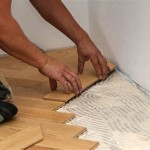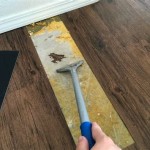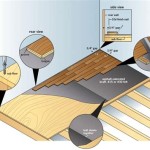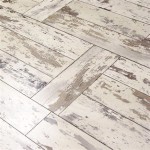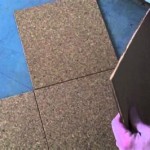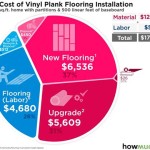Rubber Diamond Plate Flooring Tiles: A Comprehensive Guide
Rubber diamond plate flooring tiles represent a versatile and durable flooring solution suitable for a wide range of applications. Their characteristic raised diamond pattern not only provides enhanced traction but also contributes to the aesthetic appeal of the space. These tiles are composed of synthetic or recycled rubber, offering resilience, impact absorption, and resistance to various environmental factors. This article delves into the properties, benefits, installation, maintenance, and applications of rubber diamond plate flooring tiles, providing a comprehensive understanding of this popular flooring option.
Key Properties and Benefits
Rubber diamond plate flooring tiles boast several key properties that contribute to their widespread use. Their inherent resilience allows them to withstand heavy loads and constant foot traffic without significant deformation. The rubber composition provides excellent impact absorption, reducing the risk of damage to underlying surfaces and mitigating noise levels. Furthermore, rubber exhibits inherent slip resistance, enhanced by the diamond plate pattern, creating a safer walking surface, especially in environments prone to moisture or spills. Resistance to chemicals, abrasion, and extreme temperatures further expands their applicability across diverse industrial and commercial settings.
The benefits of using rubber diamond plate flooring tiles extend beyond their functional properties. The ease of installation is a significant advantage, as most tiles are designed with interlocking edges or can be adhered directly to the subfloor. This modularity allows for quick and straightforward replacement of damaged tiles, minimizing downtime and maintenance costs. The availability of various colors and patterns allows for customization, enabling the creation of visually appealing and functional spaces. Furthermore, the use of recycled rubber in many products contributes to sustainable building practices.
The durability and longevity of rubber diamond plate flooring tiles contribute to their cost-effectiveness over their lifespan. Compared to other flooring options, such as concrete or epoxy, rubber tiles require less maintenance and are less susceptible to cracking or chipping. Their ability to withstand harsh conditions and heavy use translates into reduced replacement costs and extended service life. This makes them a particularly attractive option for environments where durability and long-term performance are critical considerations.
Installation Procedures
Proper installation is crucial to ensuring the optimal performance and longevity of rubber diamond plate flooring tiles. The preparation of the subfloor is a foundational step. The subfloor must be clean, dry, level, and free from any debris or contaminants that could interfere with adhesion. Cracks or imperfections should be repaired to create a smooth and even surface. Depending on the subfloor material, a primer may be necessary to enhance adhesion.
There are two primary methods for installing rubber diamond plate flooring tiles: interlocking and direct adhesion. Interlocking tiles feature a tongue-and-groove system that allows them to be connected without the use of adhesives. This method is relatively simple and quick, making it suitable for DIY installations. However, interlocking tiles may not be suitable for high-traffic areas or environments where heavy loads are expected, as they can be susceptible to shifting or separation over time.
Direct adhesion involves applying an adhesive specifically designed for rubber flooring to the subfloor. The tiles are then carefully placed and pressed into the adhesive, ensuring proper contact and alignment. This method provides a more secure and durable installation, making it suitable for commercial and industrial applications. It is crucial to use the correct type of adhesive and to follow the manufacturer's instructions closely to ensure proper bonding and prevent bubbling or lifting.
Regardless of the installation method, it is essential to plan the layout carefully to minimize waste and ensure a consistent appearance. Cutting the tiles to fit around corners or obstructions requires precision and the use of appropriate cutting tools, such as a utility knife or a jigsaw. After installation, the tiles should be thoroughly cleaned to remove any adhesive residue or debris. Allowing sufficient time for the adhesive to cure completely before exposing the floor to heavy traffic is critical.
Maintenance and Cleaning
Maintaining rubber diamond plate flooring tiles is relatively straightforward, contributing to their low lifecycle cost. Regular cleaning is essential to remove dirt, dust, and debris that can accumulate on the surface and compromise its appearance and slip resistance. Sweeping or vacuuming the floor regularly prevents the buildup of abrasive particles that can scratch or damage the tiles. For more thorough cleaning, a mild detergent and water solution can be used.
Certain cleaning agents should be avoided, as they can damage the rubber or leave a residue that attracts dirt. Harsh chemicals, solvent-based cleaners, and abrasive scrubbing pads should be avoided. Instead, neutral pH cleaners specifically designed for rubber flooring are recommended. The cleaning solution should be applied with a mop or sponge, and the floor should be thoroughly rinsed with clean water to remove any remaining residue.
For stains or spills, prompt cleaning is essential to prevent permanent discoloration or damage. Absorbent materials, such as paper towels or cloths, should be used to blot up the spill immediately. For stubborn stains, a specialized rubber cleaner may be necessary. However, it is important to test the cleaner in an inconspicuous area first to ensure that it does not damage the flooring. Regular inspections for wear and tear, such as cracks or tears, should be conducted to identify and address any issues promptly. Replacing damaged tiles promptly prevents further damage and maintains the integrity of the flooring.
Applications Across Industries
The versatility of rubber diamond plate flooring tiles allows for their application across a wide range of industries and environments. In industrial settings, they are commonly used in factories, warehouses, and workshops to provide a durable and slip-resistant surface. They are particularly well-suited for areas where heavy machinery or equipment is used, as they can withstand the weight and impact without significant damage. Their chemical resistance makes them ideal for environments where exposure to oils, solvents, or other chemicals is common.
In commercial settings, rubber diamond plate flooring tiles are frequently used in garages, retail stores, gyms, and fitness centers. Their aesthetic appeal, combined with their durability and slip resistance, makes them a popular choice for creating safe and visually appealing spaces. In garages, they provide a protective barrier against oil spills and other automotive fluids, while in retail stores, they create a professional and inviting atmosphere. In gyms and fitness centers, their impact absorption properties help to reduce noise and prevent injuries.
Beyond industrial and commercial applications, rubber diamond plate flooring tiles are also used in residential settings. They are commonly used in garages, basements, and laundry rooms to provide a durable and water-resistant surface. They can also be used in outdoor areas, such as patios and decks, to create a slip-resistant and aesthetically pleasing surface. Their ease of installation and maintenance makes them a popular choice for homeowners looking to upgrade their flooring.
Environmental Considerations
The environmental impact of flooring materials is an increasingly important consideration for both consumers and businesses. Rubber diamond plate flooring tiles offer several environmental advantages. Many products are made from recycled rubber, diverting waste materials from landfills and reducing the demand for virgin resources. The use of recycled rubber contributes to a more sustainable built environment.
The durability and longevity of rubber diamond plate flooring tiles also contribute to their environmental benefits. By reducing the frequency of replacement, these tiles minimize the consumption of raw materials and the generation of waste. Their low maintenance requirements further reduce their environmental impact by minimizing the use of cleaning chemicals and water.
Some manufacturers of rubber diamond plate flooring tiles are committed to sustainable manufacturing practices. These practices may include using renewable energy sources, reducing water consumption, and minimizing waste generation. Selecting products from manufacturers with strong environmental credentials can further reduce the environmental footprint of the flooring project.

Diamond Plate Roll Rubber Matting

Rubber Cal Diamond Plate 4 Ft X 8 Black Flooring 32 Sq 03 206 W100 08 The Home Depot

Revolution Diamond Plate Interlocking Floor Tiles

Rubber Cal Diamond Plate 4 Ft X 1 5 Black Flooring 6 Sq 03 206 W100 The Home Depot

Diamond Plate Rubber Gym Flooring Tiles For Weight Rooms

Diamond Plate Roll Rubber Matting

24 Seven Locksafe Max Diamond Plate Modular Rubber Floor Tiles Gr Mats

Garage Floor 18 X Inch Square Rubber Diamond Plate Interlocking Tile

Rubber Cal Diamond Plate Metallic Pvc Flooring 2 5 Mm X 4 Ft 25 Beige Com

Diamond Plate Rubber Flooring Tile Garage Sheet Mats China Mat Made In Com
Related Posts


